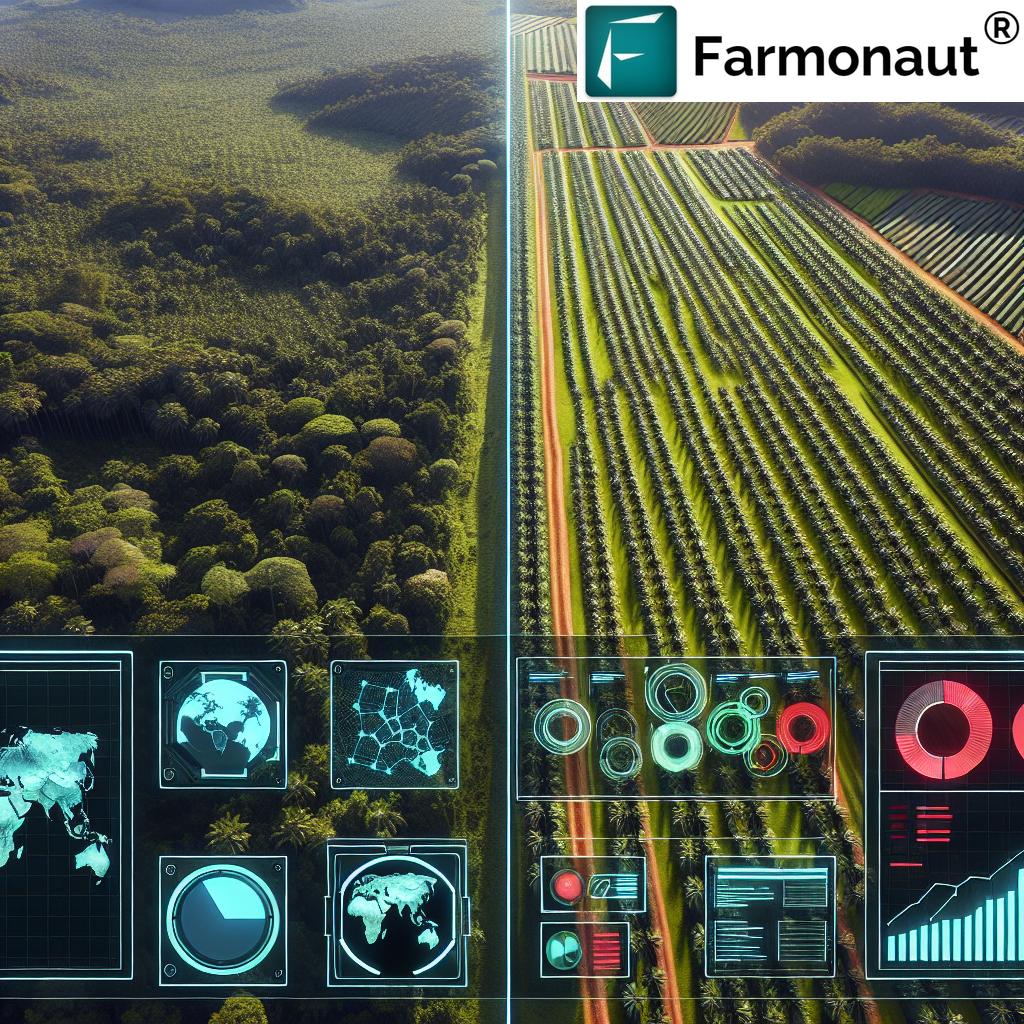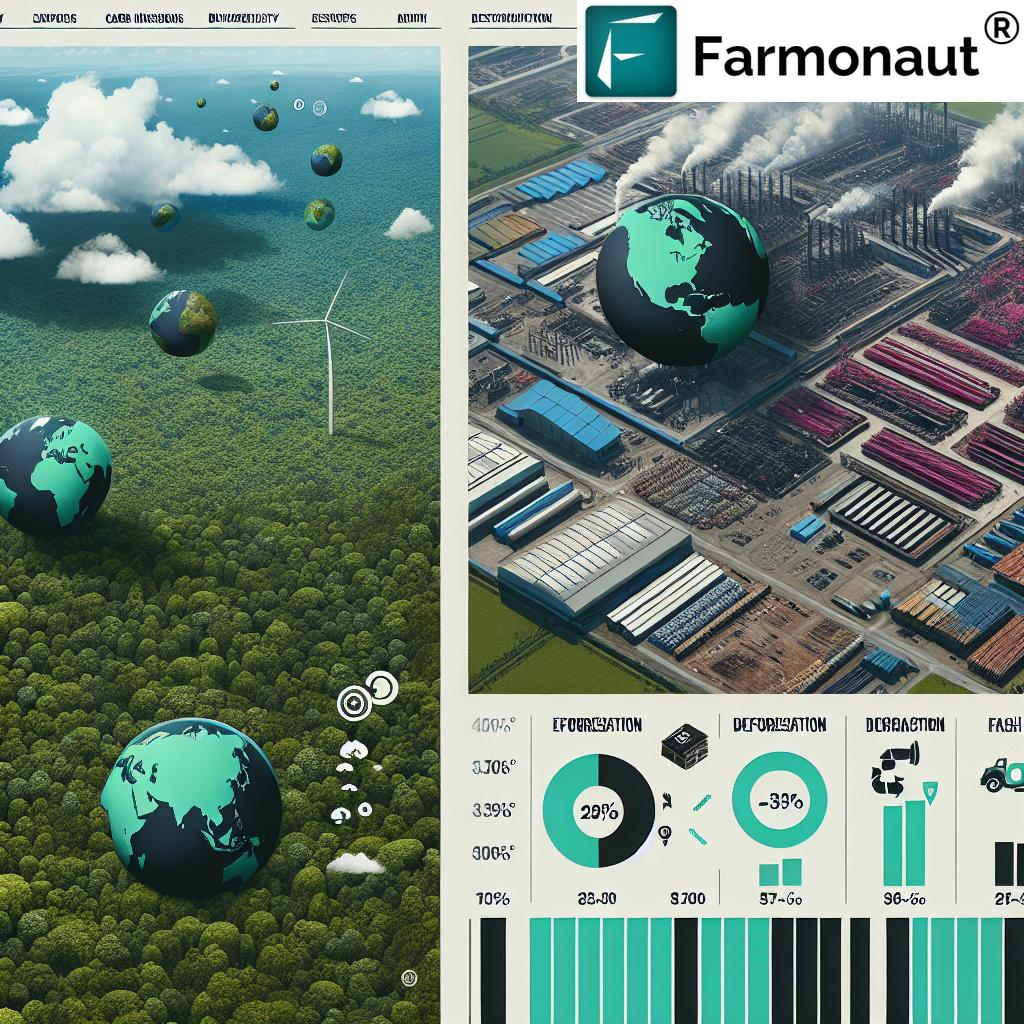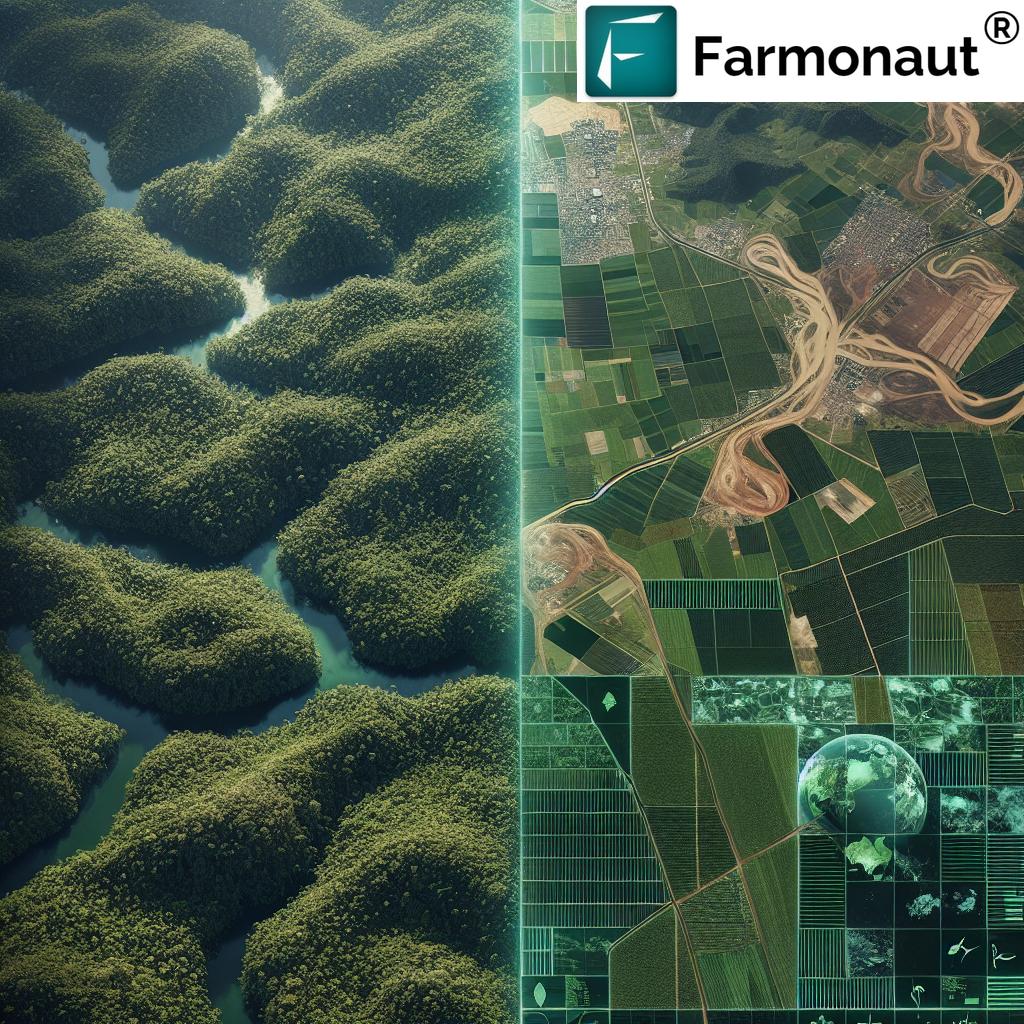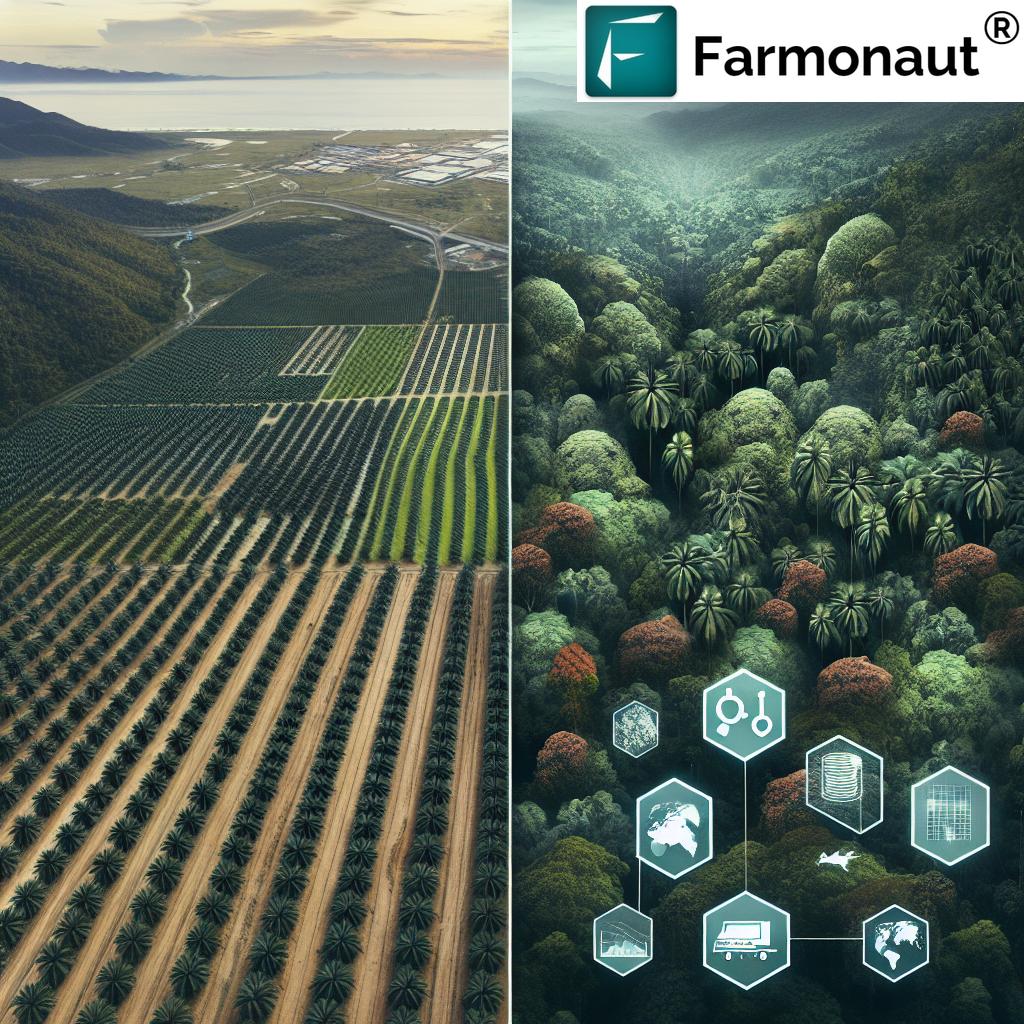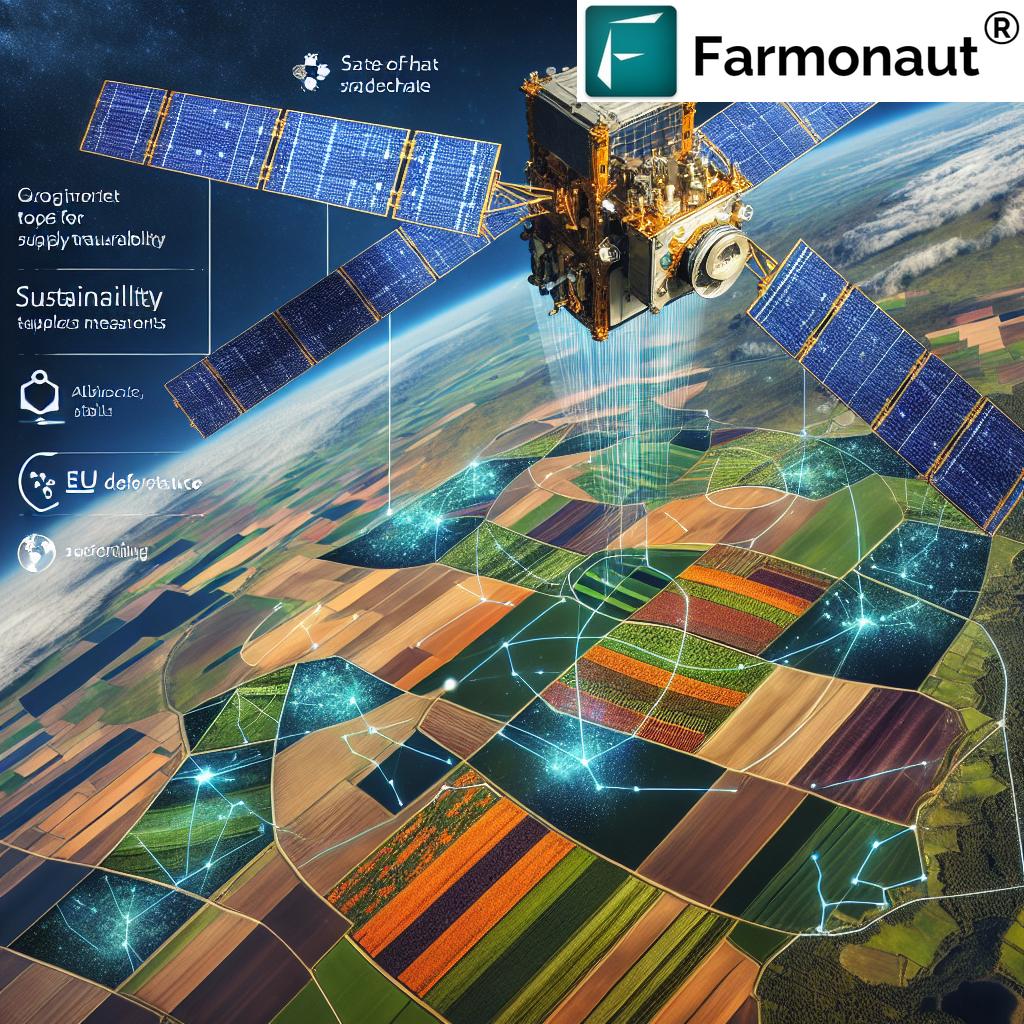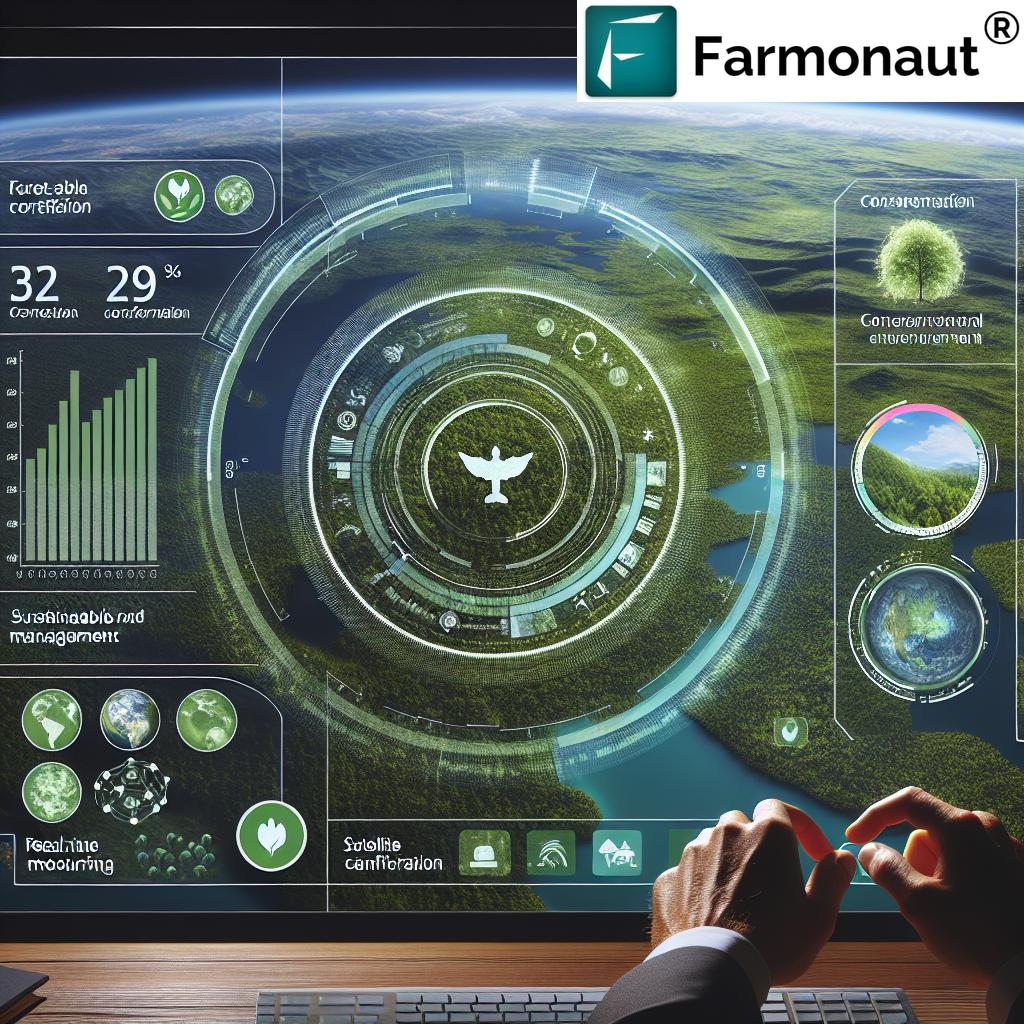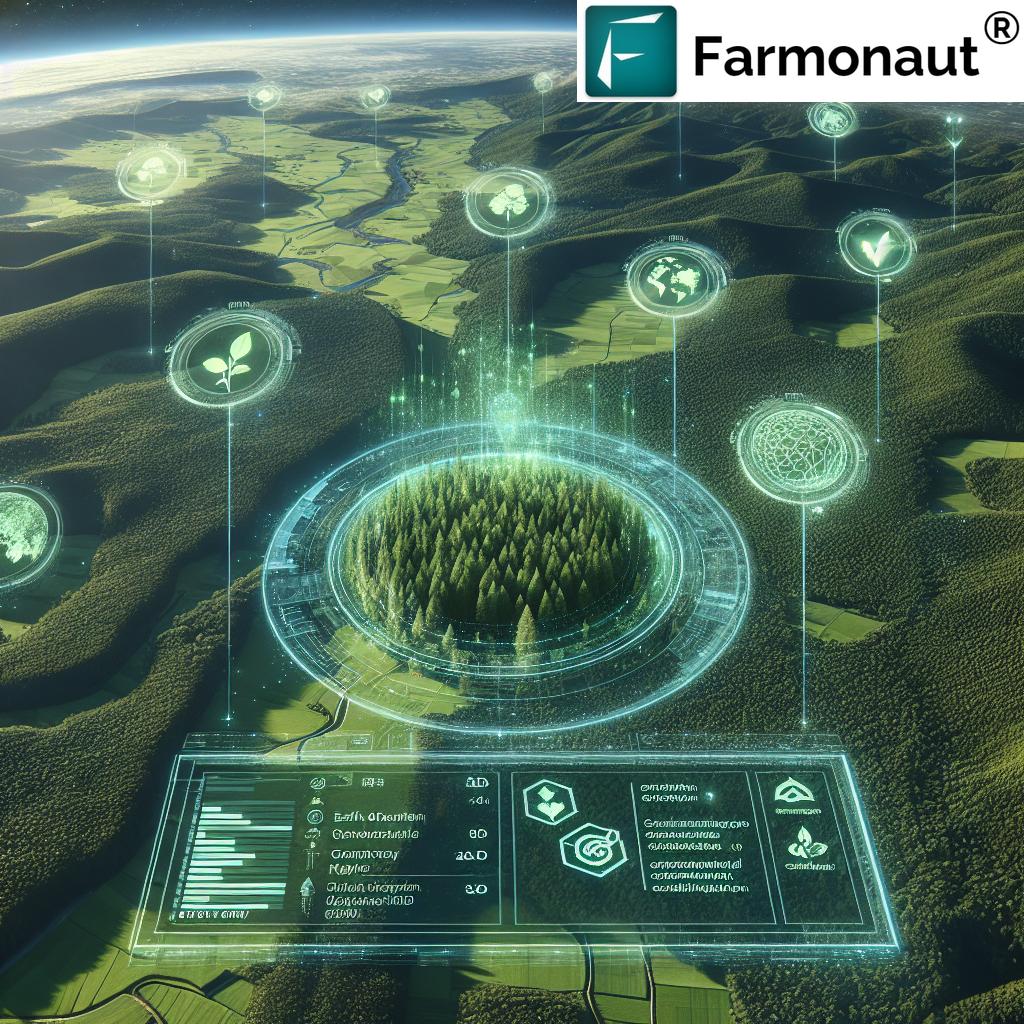Unveiling Hidden Deforestation: How Sustainable Fashion Can Transform Global Supply Chains
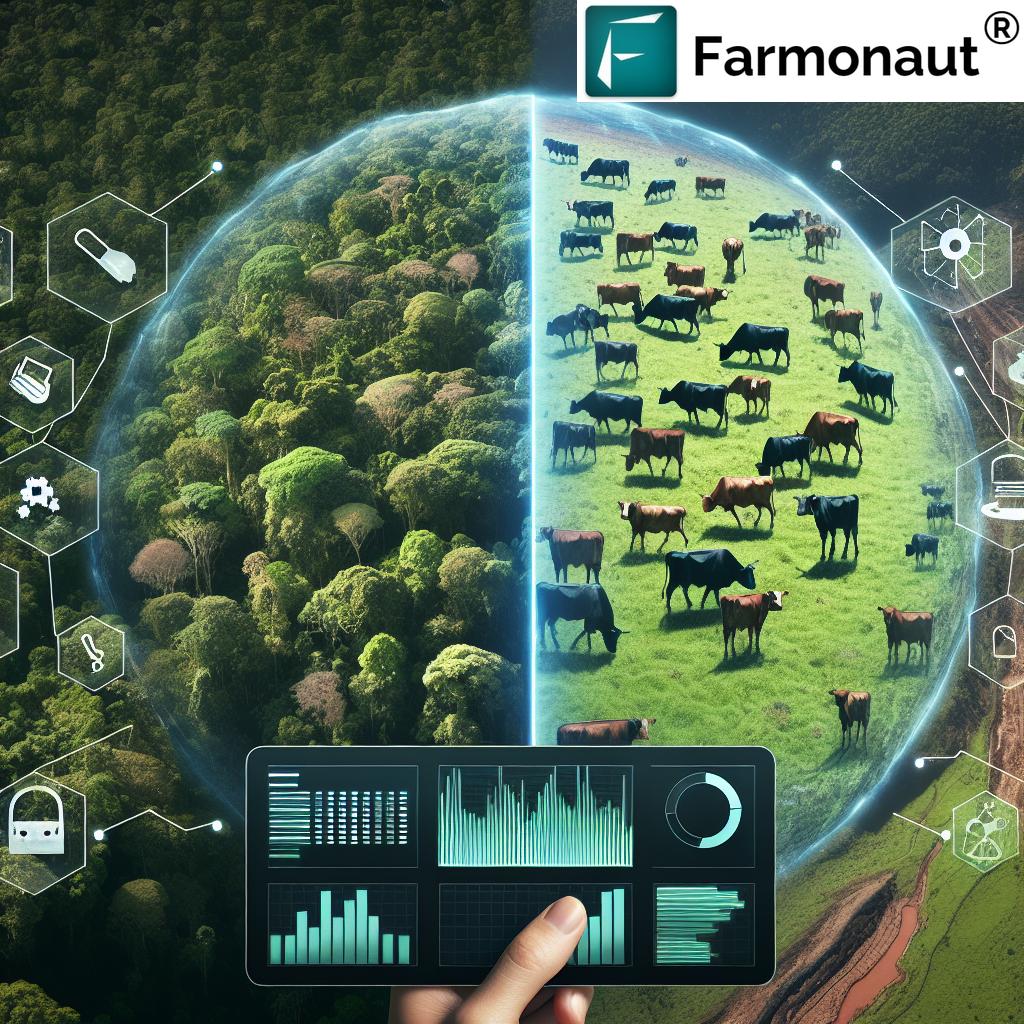
“The EU Deforestation Regulation targets fashion’s hidden impact, with leather and cellulosic fibers contributing significantly to ecosystem degradation.”
In the ever-evolving world of fashion, a hidden crisis lurks beneath the surface of our favorite garments. As we delve into the complex relationship between the fashion industry and global deforestation, we uncover a tale of environmental degradation, climate change, and the urgent need for sustainable transformation. The approaching EU Deforestation Regulation shines a spotlight on this critical issue, demanding accountability and action from fashion brands worldwide.
At Farmonaut, we recognize the importance of sustainable practices in all industries, including fashion. Our advanced satellite-based technologies offer valuable insights for tracking and managing sustainable sourcing practices, which can be pivotal in addressing the challenges faced by the fashion industry in its quest for sustainability.
The Hidden Impact of Fashion on Forests
The fashion industry’s role in deforestation is often overlooked, but its impact is substantial. From the leather used in luxury handbags to the cellulosic fibers woven into comfortable t-shirts, many of our clothing materials have roots in forest ecosystems. This connection between fashion and forests creates a complex web of environmental challenges that extend far beyond the runway.
- Leather Production: The cattle industry, a major supplier of leather, is a significant driver of deforestation, particularly in the Amazon rainforest.
- Cellulosic Fibers: Materials like viscose and rayon, derived from wood pulp, contribute to the degradation of ancient and endangered forests.
- Cotton Cultivation: While not directly linked to deforestation, intensive cotton farming can lead to soil degradation and water scarcity, indirectly pressuring forest ecosystems.
As consumers, we often remain unaware of these hidden impacts. However, with growing awareness and upcoming regulations, both fashion brands and shoppers are facing increased pressure to demand real action against deforestation.
The EU Deforestation Regulation: A Game-Changer for Fashion
The European Union’s forthcoming Deforestation Regulation marks a significant milestone in the fight against global forest loss. This landmark legislation aims to ensure that products sold in the EU market are not linked to deforestation or forest degradation. For the fashion industry, this means a major overhaul of supply chains and sourcing practices.
Key aspects of the EU Deforestation Regulation affecting fashion:
- Mandatory due diligence for companies importing or exporting certain commodities, including leather and specific textiles
- Traceability requirements to verify that products are deforestation-free
- Potential fines and market exclusion for non-compliant companies
This regulation is set to reshape the global fashion landscape, pushing brands to prioritize transparency and sustainable sourcing like never before.
The Role of Technology in Sustainable Fashion
In the quest for sustainable fashion and deforestation-free supply chains, technology plays a crucial role. Advanced tools and platforms, such as those offered by Farmonaut, can provide invaluable support to fashion brands seeking to monitor and manage their environmental impact.
Farmonaut’s contribution to sustainable fashion:
- Satellite-based monitoring for tracking land use changes and forest cover
- AI-driven analytics to assess sustainability risks in supply chains
- Blockchain-based traceability solutions for transparent product journeys
By leveraging these technologies, fashion brands can gain unprecedented visibility into their supply chains, from raw material sourcing to final product delivery.
Transparency Issues in Fashion Supply Chains
One of the biggest challenges facing the fashion industry in its pursuit of sustainability is the lack of transparency in complex, global supply chains. Many brands struggle to trace the origin of their materials, making it difficult to ensure that they are not contributing to deforestation or other environmental harms.
Common transparency issues in fashion supply chains:
- Multiple tiers of suppliers, making traceability challenging
- Limited visibility into raw material sourcing practices
- Insufficient data collection and sharing among supply chain partners
Addressing these transparency issues is crucial for fashion brands to comply with upcoming regulations and meet growing consumer demands for eco-conscious products.
Initiatives Driving Change in the Fashion Industry
As awareness of fashion’s environmental impact grows, various initiatives have emerged to drive positive change within the industry. These efforts aim to hold brands accountable and promote sustainable practices throughout the supply chain.
Key initiatives transforming fashion’s approach to sustainability:
- CanopyStyle: A collaborative initiative working to ensure that the fashion industry’s viscose and rayon fabrics are not sourced from ancient and endangered forests.
- Fashion Pact: A global coalition of fashion and textile companies committed to key environmental goals, including stopping global warming, restoring biodiversity, and protecting the oceans.
- Sustainable Apparel Coalition: An industry-wide group of more than 250 leading apparel, footwear, and textile brands working to reduce environmental impact and promote social justice throughout the global value chain.
These initiatives play a crucial role in setting industry standards and driving collective action towards more sustainable practices.
“Despite growing eco-conscious consumer demand, many fashion companies still lack robust commitments to forest sustainability in their supply chains.”
The Power of Consumer Demand
As awareness of environmental issues grows, consumers are increasingly demanding sustainable and eco-friendly products. This shift in consumer behavior is putting pressure on fashion brands to adopt more responsible practices and prioritize sustainability in their operations.
How consumer demand is reshaping the fashion industry:
- Increased preference for brands with transparent supply chains
- Growing market for sustainable and eco-friendly fashion products
- Social media campaigns and boycotts targeting brands with poor environmental records
By making informed choices and supporting sustainable brands, consumers have the power to drive significant change in the fashion industry.
Explore Farmonaut’s API for advanced sustainability tracking
Sustainable Material Sourcing: A Key to Transformation
At the heart of fashion’s sustainability challenge lies the issue of material sourcing. By adopting sustainable sourcing practices, brands can significantly reduce their environmental impact and contribute to forest conservation efforts.
Strategies for sustainable material sourcing in fashion:
- Prioritizing recycled and upcycled materials
- Investing in innovative, eco-friendly fabric alternatives
- Implementing rigorous supplier vetting and auditing processes
- Collaborating with local communities to ensure sustainable harvesting practices
By embracing these strategies, fashion brands can create products that not only look good but also do good for the planet.
The Role of Biodiversity in Fashion
Biodiversity plays a crucial role in the fashion industry, from providing raw materials to inspiring designs. However, the industry’s current practices often threaten biodiversity, particularly in forest ecosystems.
Importance of biodiversity in fashion:
- Source of natural fibers and dyes
- Inspiration for textile patterns and designs
- Crucial for maintaining healthy ecosystems that support sustainable agriculture
By recognizing the value of biodiversity and taking steps to protect it, the fashion industry can ensure its long-term sustainability while preserving the natural world that inspires and sustains it.
Access Farmonaut’s API Developer Docs for sustainability solutions
Climate Change and Fashion: A Two-Way Street
The relationship between climate change and the fashion industry is complex and bidirectional. While the industry contributes significantly to global carbon emissions, it is also increasingly vulnerable to the impacts of climate change.
Key aspects of the climate change-fashion nexus:
- Fashion’s contribution to greenhouse gas emissions through production and transportation
- Vulnerability of cotton and other crops to changing weather patterns
- Potential disruptions to supply chains due to extreme weather events
Addressing climate change is not just an environmental imperative for the fashion industry; it’s also a business necessity to ensure long-term resilience and sustainability.

Comparative Analysis of Fashion Materials and Their Deforestation Impact
| Material Type | Estimated Annual Deforestation Impact (hectares) | Primary Regions Affected | Sustainability Initiatives | EU Deforestation Regulation Compliance Status |
|---|---|---|---|---|
| Leather | 100,000 – 200,000 | Amazon Basin, Central America | Leather Working Group | High risk, subject to due diligence |
| Cellulosic Fibers (Viscose, Rayon) | 150,000 – 250,000 | Indonesia, Canada, Brazil | CanopyStyle | Medium risk, compliance measures needed |
| Cotton | Indirect impact | India, China, USA | Better Cotton Initiative | Low direct risk, but water use concerns |
| Wool | 10,000 – 50,000 | Australia, New Zealand | Responsible Wool Standard | Low risk, generally compliant |
| Synthetic Fibers (Polyester, Nylon) | Minimal direct impact | Global | Recycled Polyester Commitment | Low risk for deforestation, but other environmental concerns |
This table provides a clear overview of how different materials used in the fashion industry impact deforestation. It highlights the varying levels of risk and the regions most affected, as well as current sustainability initiatives and compliance status with the upcoming EU Deforestation Regulation.
The Future of Sustainable Fashion
As we look to the future, the fashion industry stands at a crossroads. The path forward requires a fundamental shift towards sustainability, transparency, and responsibility. With technologies like those offered by Farmonaut, brands have the tools to make this transition.
Key trends shaping the future of sustainable fashion:
- Increased adoption of circular economy principles
- Growing market for rental and second-hand fashion
- Innovations in sustainable materials and production processes
- Greater emphasis on local and ethical production
By embracing these trends and leveraging advanced technologies, the fashion industry can transform its relationship with the environment and create a more sustainable future.
Conclusion: A Call to Action for Sustainable Fashion
The fashion industry’s hidden impact on deforestation is a critical issue that demands urgent attention and action. As we’ve explored in this blog post, the challenges are complex, but solutions are within reach. From embracing sustainable material sourcing to leveraging advanced technologies for supply chain transparency, fashion brands have the power to transform their practices and contribute to global forest conservation efforts.
At Farmonaut, we’re committed to supporting this transformation by providing cutting-edge tools for monitoring and managing sustainable practices. Our satellite-based technologies offer valuable insights that can help fashion brands track their environmental impact and make informed decisions about sourcing and production.
As consumers, we also play a crucial role in driving change. By demanding transparency, supporting eco-conscious brands, and making informed purchasing decisions, we can collectively push the fashion industry towards a more sustainable future.
The EU Deforestation Regulation serves as a catalyst for change, but true transformation will require ongoing commitment and collaboration across the entire fashion ecosystem. By working together – brands, consumers, technology providers, and policymakers – we can unveil and address the hidden deforestation in fashion supply chains, creating a more sustainable and resilient industry for generations to come.
FAQ: Sustainable Fashion and Deforestation
Q1: How does the fashion industry contribute to deforestation?
A1: The fashion industry contributes to deforestation through the sourcing of materials like leather (linked to cattle ranching) and cellulosic fibers (derived from wood pulp). These practices can lead to the clearing of forests, particularly in vulnerable ecosystems like the Amazon rainforest.
Q2: What is the EU Deforestation Regulation, and how will it affect the fashion industry?
A2: The EU Deforestation Regulation is a forthcoming legislation aimed at ensuring products sold in the EU market are not linked to deforestation. It will require fashion brands to implement due diligence processes and ensure traceability in their supply chains, particularly for materials like leather and certain textiles.
Q3: How can consumers support sustainable fashion practices?
A3: Consumers can support sustainable fashion by choosing eco-friendly brands, opting for second-hand or rented clothing, and demanding transparency from fashion companies about their sourcing and production practices.
Q4: What role does technology play in creating sustainable fashion supply chains?
A4: Technology plays a crucial role in sustainable fashion by enabling supply chain transparency, traceability, and monitoring. Tools like satellite imagery, blockchain, and AI can help brands track their environmental impact and make more sustainable sourcing decisions.
Q5: What are some innovative materials being used in sustainable fashion?
A5: Innovative sustainable materials include recycled plastics, organic and regenerative cotton, plant-based leathers (e.g., from pineapple or mushroom), and fibers made from agricultural waste. These materials aim to reduce environmental impact while maintaining quality and performance.





